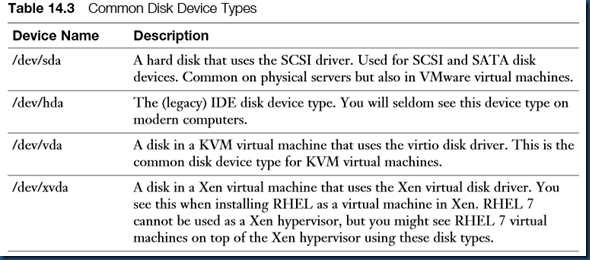linux常见设备类型及文件系统
As you can see in Table 14.3 , all disk device names end with the letter a. That is because it is the first disk that was found in your server. The second SCSI disk, for instance, would have the name /dev/sdb. If many disks are installed in a server, you can have up to /dev/sdz and even beyond. After /dev/sdz, the kernel continues creating devices with names like /dev/sdaa and /dev/sdab.
 To format a partition with one of the supported file systems, you can use the mkfs command, using the option -t to specify which specific file system needs to be used. Alternatively, one of the file system specific tools can be used, such as mkfs.ext4 to format an Ext4 file system. mkfs.ext4 /dev/sdb1
To format a partition with one of the supported file systems, you can use the mkfs command, using the option -t to specify which specific file system needs to be used. Alternatively, one of the file system specific tools can be used, such as mkfs.ext4 to format an Ext4 file system. mkfs.ext4 /dev/sdb1
NOTE If you are using mkfs without any further specification of which file system you want to format, an Ext2 file system will be formatted. This is probably not what you want to use, so do not forget to specify which file system you want to use.
To format a partition with the default XFS file system, the command mkfs -t xfs is used. mkfs -t xfs /dev/vda5



